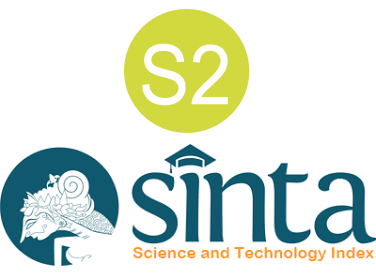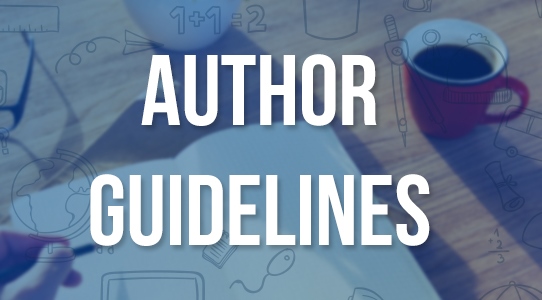Mathematics Anxiety and Learning Interest Among Sharia Economics Students: A Gender-Based Analysis in Indonesian Higher Education
DOI:
https://doi.org/10.37680/qalamuna.v17i2.7427Keywords:
Mathematics Anxiety, Student Interest, Gender, Higher EducationAbstract
Mathematics education in Indonesia continues to face persistent challenges, particularly concerning student anxiety and engagement. While prior studies have extensively explored the math anxiety on academic performance, investigations at the higher education level remain limited. This study explores the relationship between math anxiety and learning interest, specifically focusing on gender differences among students in the Sharia Economics Program at STAI Sangatta, East Kutai. Adopting a quantitative approach, data were collected from 72 students via a digital questionnaire comprising 30 items measuring anxiety and 15 assessing interest in mathematics, all rated on a four-point Likert scale. The Pearson correlation analysis revealed a moderate but statistically insignificant positive correlation for male students (r = 0.431), and a strong, statistically significant positive correlation for female students (r = 0.750). These findings suggest that higher anxiety levels may be linked to increased motivation to learn mathematics among female students. This perspective challenges the conventional belief that academic anxiety is solely detrimental. The study emphasizes the need for integrated strategies that address both emotional and motivational aspects of learning. It advocates for gender-sensitive teaching methods and inclusive educational practices, particularly in disciplines like Sharia Economics, where mathematical proficiency is essential for academic and professional success.
References
Ahmmed, S., Saha, J., Tamal, M. A., Abdullah Al Mamun, K., & Islam, S. (2024). Factors predicting the mathematics anxiety of adolescents: a structural equation modeling approach. Frontiers in Psychiatry, 15(December), 1–14. https://doi.org/10.3389/fpsyt.2024.1484381
Amelia, T., & Ulfah, S. (2022). Pengaruh Kecemasan Matematika Siswa Terhadap Kemampuan Penalaran Matematis Pada Pembelajaran Daring. JIPM (Jurnal Ilmiah Pendidikan Matematika), 11(1), 81. https://doi.org/10.25273/jipm.v11i1.13215
Arevee, E., & Vintere, A. (2023). Overcoming Mathematical Anxiety To Promote Progress in Mathematics During Undergraduate Engineering Studies At the University. Engineering for Rural Development, 22, 1069–1074. https://doi.org/10.22616/ERDev.2023.22.TF215
Asanjarani, F., Arif, A., Rashidi, B., & Bolghan-Abadi, M. (2024). The relationship between math anxiety and educational motivation: the mediating role of school belongingness. Educational Research and Evaluation, 29(5–6), 322–343. https://doi.org/10.1080/13803611.2024.2348084
Ashcraft, M. H., & Moore, A. M. (2009). Mathematics anxiety and the affective drop in performance. Journal of Psychoeducational Assessment, 27(3), 197–205. https://doi.org/10.1177/0734282908330580
Aulia, S., Zetriuslita, Z., Amelia, S., & ... (2021). Analisis Minat Belajar Matematika Siswa dalam Menggunakan Aplikasi Scratch pada Materi Trigonometri. JURING (Journal for …, 4(3), 205–214.
Berutu, M. H. A., & Tambunan, M. I. H. (2018). Pengaruh Minat Dan Kebiasaan Belajar Terhadap Hasil Belajar Biologi Siswa SMA Se-Kota Stabat. Jurnal Biolokus, 1(2), 109. https://doi.org/10.30821/biolokus.v1i2.351
Bjälkebring, P. (2019). Math Anxiety at the University: What Forms of Teaching and Learning Statistics in Higher Education Can Help Students With Math Anxiety? Frontiers in Education, 4(April), 1–5. https://doi.org/10.3389/feduc.2019.00030
Cancino, M. (2021). Incidental vocabulary learning and retention of EFL learners. Revista Española de Lingüística Aplicada/Spanish Journal of Applied Linguistics, 34(1), 31–52. https://doi.org/10.1075/resla.19049.can
Carmo, J. dos S., & Simionato, A. M. (2012). Reversão de ansiedade à matemática: Alguns dados da literatura. Psicologia Em Estudo, 17(2), 317–327. https://doi.org/10.1590/S1413-73722012000200015
Demedts, F., Reynvoet, B., Sasanguie, D., & Depaepe, F. (2022). Unraveling the role of math anxiety in students’ math performance. Frontiers in Psychology, 13(November), 1–9. https://doi.org/10.3389/fpsyg.2022.979113
Flowerday, T., & Shell, D. F. (2015). Disentangling the effects of interest and choice on learning, engagement, and attitude. Learning and Individual Differences, 40(February), 134–140. https://doi.org/10.1016/j.lindif.2015.05.003
Gilmore, C., Clayton, S., Cragg, L., McKeaveney, C., Simms, V., & Johnson, S. (2018). Understanding arithmetic concepts: The role of domain-specific and domain-general skills. PLoS ONE, 13(9), 1–20. https://doi.org/10.1371/journal.pone.0201724
Gunardi. (2020). Inquiry Based Learning dapat Meningkatkan Hasil Belajar Siswa dalam Pelajaran Matematika. Social, Humanities, and Education Studies (SHEs): Conference Series, 3(3), 2288–2294. https://jurnal.uns.ac.id/shes
Herpratiwi, & Tohir, A. (2022). Learning Interest and Discipline on Learning Motivation. International Journal of Education in Mathematics, Science and Technology, 10(2), 424–435. https://doi.org/10.46328/ijemst.2290
Himmi, N., & Azni, A. (2017). Hubungan Kesiapan Belajar Dan Kecemasan Matematika Terhadap Hasil Belajar Matematika Siswa Smp. Pythagoras, 6(1), 22–30. https://doi.org/10.33373/PYTHAGORAS.V6I1.619
Jazuli, A., Setyosari, P., Sulthon, & Kuswandi, D. (2017). Improving conceptual understanding and problem-solving in mathematics through a contextual learning strategy. Global Journal of Engineering Education, 19(1), 49–53.
Karimuddin Abdullah, Misbahul Jannah, Ummul Aiman, Suryadin Hasda, Zahara Fadilla, Ns. Taqwin, M., Ketut Ngurah Ardiawan, & Meilida Eka Sari. (2022). Metodologi Penelitian Kuantitatif. Yayasan Penerbit Muhammad Zaini.
Komariyah, S., Afifah, D. S. N., & Resbiantoro, G. (2018). Analisis Pemahaman Konsep Dalam Memecahkan Masalah Matematika Ditinjau Dari Minat Belajar Siswa. SOSIOHUMANIORA: Jurnal Ilmiah Ilmu Sosial Dan Humaniora, 4(1), 1–8. https://doi.org/10.30738/sosio.v4i1.1477
Lisma, E., Rahmadhani, R., & Siregar, M. A. P. (2019). Pengaruh Kecemasan Terhadap Minat Belajar Matematika Siswa. ENLIGHTEN (Jurnal Bimbingan Dan Konseling Islam), 2(2), 85–91. https://doi.org/10.32505/enlighten.v2i2.1345
Luthfiyah, & Hadi, W. (2021). Kecemasan Siswa Terhadap Matematika Pada Pembelajaran Online Di Masa Pandemi Covid-19 Ditinjau Dari Tingkatan Sekolah Dan Gender. Transformasi : Jurnal Pendidikan Matematika Dan Matematika, 5(1), 427–440. https://doi.org/10.36526/tr.v5i1.1149
Marhadi Saputro, Yadi Ardiawan, D. F. (2015). FAKTOR-FAKTOR YANG MEMPENGARUHI ( STUDI KORELASI PADA MAHASISWA PENDIDIKAN MATEMATIKA IKIP PGRI PONTIANAK ). Jurnal Pendidikan Informatika Dan Sains, 4(2), 233–246.
Mbagho, H. M., & Tupen, S. N. (2020). Pembelajaran Matematika Realistik dalam Meningkatkan Hasil Belajar Matematika Materi Operasi Bilangan Pecahan. Journal Basicedu, 5(1), 121–132. https://doi.org/10.31004/basicedu.v5i1.632
Milovanović, I. (2020). Math anxiety, achievement, and motivation in high school students: Gender effects. Croatian Journal of Education, 22(1), 175–206. https://doi.org/10.15516/cje.v22i1.3372
Ng, P. F., & Teoh, K. K. (2019). Gender differences and affective factors influencing mathematics learning success in an enabling program. International Journal of Information and Education Technology, 9(4), 306–309. https://doi.org/10.18178/ijiet.2019.9.4.1217
Nugroho, M. A., Muhajang, T., & Budiana, S. (2020). Pengaruh Minat Belajar Siswa Terhadap Hasil Belajar Mata Pelajaran Matematika. JPPGuseda | Jurnal Pendidikan & Pengajaran Guru Sekolah Dasar, 3(1), 42–46. https://doi.org/10.33751/jppguseda.v3i1.2014
Pramudya, P. A., & Safrul, S. (2022). Analisis Model Pembelajaran Inkuiri Terbimbing terhadap Minat Belajar Matematika Siswa Sekolah Dasar. Jurnal Basicedu, 6(5), 8131–8138. https://doi.org/10.31004/basicedu.v6i5.3749
Prastika, Y. D. (2020). Pengaruh Minat Belajar Siswa Terhadap Hasil Belajar Matematika Siswa Smk Yadika Bandar Lampung. Jurnal Ilmiah Matematika Realistik, 1(2), 17–22. https://doi.org/10.33365/ji-mr.v1i2.519
Putri, H. E., Wahyudy, M. A., Yuliyanto, A., & Nuraeni, F. (2020). Development of instruments to measure the mathematical anxiety of elementary school students. International Journal of Learning, Teaching and Educational Research, 19(6), 282–302. https://doi.org/10.26803/IJLTER.19.6.17
Ramirez, G., Chang, H., Maloney, E. A., Levine, S. C., & Beilock, S. L. (2016). On the relationship between math anxiety and math achievement in early elementary school: The role of problem-solving strategies. Journal of Experimental Child Psychology, 141, 83–100. https://doi.org/10.1016/j.jecp.2015.07.014
Rina, Herna, & Nur Fahri Tadjuddin. (2021). Pengaruh Minat Terhadap Hasil Belajar Matematika Siswa dengan Aktivitas Belajar Sebagai Variabel Intervening. JTMT: Journal Tadris Matematika, 2(1), 19–27. https://doi.org/10.47435/jtmt.v2i1.648
Safiyah, S. (2020). The Relationship Between Academic Self-Efficacy and Mathematics Anxiety in Upper Elementary School Students. 7, 1–15. https://doi.org/10.21070/acopen.7.2022.5459
Sansone, C., Geerling, D. M., Thoman, D. B., & Smith, J. L. (2019). Self-Regulation of Motivation. In The Cambridge Handbook of Motivation and Learning (Issue February). https://doi.org/10.1017/9781316823279.006
Saputra, P. R. (2014). Kecemasan Matematika dan Cara Menguranginya (Mathematic Anxiety and How To Reduce It). Journal Phytagoras, 3(2), 75–84.
Sholehah, S. H., Handayani, D. E., & Prasetyo, S. A. (2018). Minat Belajar Siswa Pada Mata Pelajaran Matematika Kelas Iv Sd Negeri Karangroto 04 Semarang. Mimbar Ilmu, 23(3), 237–244. https://doi.org/10.23887/mi.v23i3.16494
Tafonao, T. (2018). Peranan Media Pembelajaran Dalam Meningkatkan Minat Belajar Mahasiswa. Jurnal Komunikasi Pendidikan, 2(2), 103. https://doi.org/10.32585/jkp.v2i2.113
Wahyudy, M. A., Putri, H. E., Muqodas, I., Purwakarta, K., & Indonesia, U. P. (2019). Penerapan Pendekatan Concrete-Pictorial-Abstract (CPA) Dalam Menurunkan Kecemasan Matematis Siswa Sekolah Dasar. Simposium Nasional Ilmiah & Call for Paper Unindra (Simponi), 1(1), 228–238. https://doi.org/10.30998/simponi.v0i0.428
Wijaya, T. T., Cao, Y., Weinhandl, R., Yusron, E., & Lavicza, Z. (2022). Applying the UTAUT Model to Understand Factors Affecting Micro-Lecture Usage by Mathematics Teachers in China. Mathematics, 10(7), 1–20. https://doi.org/10.3390/math10071008
Wijaya, Y. (2021). Hubungan Minat Belajar Dengan Hasil Belajar Matematika Siswa Kelas Xi.Ipa.2 Sman 1 Muaro Jambi Semester Ganjil Tahun Pelajaran 2019-2020. SECONDARY: Jurnal Inovasi Pendidikan Menengah, 1(4), 267–272. https://doi.org/10.51878/secondary.v1i4.609
Wong, S. L., & Wong, S. L. (2019). Relationship between interest and mathematics performance in a technology-enhanced learning context in Malaysia. Research and Practice in Technology Enhanced Learning, 14(1). https://doi.org/10.1186/s41039-019-0114-3
Wulandari, S. (2020). Analisis Kesalahan Menyelesaikan Soal Trigonometri Siswa Kelas X Sma. Math Education Journal, 4(1), 64–80. https://doi.org/10.15548/mej.v4i1.904
Wulandari, S., & Gusteti, M. U. (2021). Defragmentation of Preservice Teachers’ Thinking Structures in Solving Higher Order Mathematics Problems. Journal of Physics: Conference Series, 1940(1). https://doi.org/10.1088/1742-6596/1940/1/012099
Wulandari, S., & Hayati, I. (2022). Studi Literatur : Peran Questioning Sebagai Scaffolding dalam Pembelajaran Matematika. Jurnal Pedagogik Matematika, 5(2), 43–52.
Yelvalinda, Y., Pujiastuti, H., & Fatah, A. (2019). Pengaruh Model Pembelajaran Problem Based Learning terhadap Pemahaman Matematis Ditinjau dari Kemampuan Awal Matematika. Edumatica : Jurnal Pendidikan Matematika, 9(1), 23–32. https://doi.org/10.22437/edumatica.v9i1.6108
Downloads
Published
How to Cite
Issue
Section
License
Copyright (c) 2025 Imrona Hayati, Suci Wulandari, Surip Stanislaus, Diah Dwi Santri

This work is licensed under a Creative Commons Attribution-ShareAlike 4.0 International License.
Authors who submit manuscript retain its copyright and grant publisher right of first publication licensed under a Creative Commons Attribution-ShareAlike 4.0 International License (CC BY-SA 4.0) that allows others to access (search, read, download, and cite), share (copy and redistribute the material in any medium or format) and adapt (remix, transform, and build upon any material) the work for any lawful purpose, even commercially with an acknowledgement of the work's authorship and initial publication in Qalamuna: Jurnal Pendidikan, Sosial, dan Agama.











